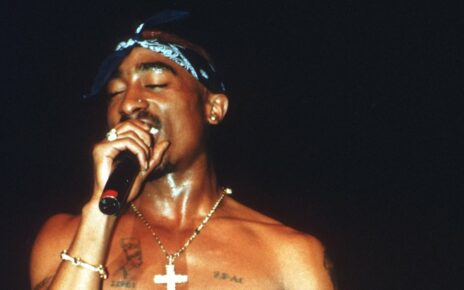Celebrating black British history: The UK’s greatest historical figures from Samuel Coleridge-Taylor to a forgotten governor of Roman Britain… as it’s revealed half of Brits can’t name a single one
- Here are some of the most influential figures throughout black British history
A YouGov survey has revealed than 50% of Brits know so little about black British history that they cannot name a single historical figure.
The research, which was commissioned by publishing company Bloomsbury UK, found that 75% of British adults surveyed acknowledged that they did not know ‘very much’ or ‘anything at all’ about pertinent figures through black British history.
So, who are among the most notable figures in black British history? How did they make important contributions to British culture?
Read on below for a list of some of the most well-known figures throughout black British history.
Samuel Coleridge-Taylor
Samuel Taylor-Coleridge’s composition ‘Hiwata’s Wedding Piece’ was so popular that, in 1904, he was invited by the then-US President Theodore Roosevelt to visit the White House
An English composer and conductor, Samuel Coleridge-Taylor was born in Holborn, London in 1875 to an English mother and a father originally from Sierra Leone.
He was named after the famous poet Samuel Taylor Coleridge who interesingly inspired the composer throughout his distinguished career.
After being taught to play the violin by his father, Coleridge-Taylor was accepted into the Royal College of Music at the age of 15.
Having started to write composition with the help of his professor Charles Stanford, Coleridge-Taylor released his debut ‘Ballade In A Minor’, which saw him labelled as a ‘genius’ by music publisher August Jaeger, per Classic FM.
In a fitting ode to his heritage, a number of the composer’s works were influenced by traditional African music.
Indeed, his composition ‘Hiwata’s Wedding Piece’ was so popular that, in 1904, he was invited by the then-US President Theodore Roosevelt to visit the White House.
Coleridge-Taylor’s commitment to excellence was said to take an enormous toll in his health, however, which resulted in his death from pneumonia at the age of 37 on September 1, 1912.
Quintus Lollius Urbicus
Quintus Lollius Urbicus (pictured) was sent to Britain as one of the first commissions of the emperor Antoninus Pius
A forgotten governor of Roman Britain, Quintus Lollius Urbicus was sent to Britain as one of the first commissions of the emperor Antoninus Pius soon after he came to power in July 138AD.
A native of Numidia (now Algeria), and former governor of Lower Germany, Urbicus campaigned against several British tribes from various parts of Scotland.
According to history website Roman Britain, evidence suggests that he personally campaigned with the Second Legion Augusta, as this unit is mentioned on four of five inscriptions that recorded building work that was done under his governorship.
Mary Seacole
Mary Seacole is regarded as one of the most important figures in British history and was known as ‘Mother Seacole’ for her work in helping British soldiers during the Crimean War
Born in Kingston, Jamaica some time around 1805, Mary Seacole is regarded as one of the most important figures in British history thanks to her work as a nurse during the Crimean War.
She was said to be so interested in medicine and healing that, as a child, she would apply bandages to dolls and pets.
Following in the footsteps of her mother, a Jamaican doctor who nursed enslaved African people and British soldiers stationed on the island, Seacole began working at a hospital with her when she was just 12 years old.
Despite being denied the chance to work with Florence Nightingale – potentially due to her race – Seacole remained undeterred, setting up the famous ‘British Hotel’, where she would tend to injured soldiers on the front line during the Crimean War.
Her work saw her earn the name of ‘Mother Seacole’ among members of the British Army, with a statue also erected in her honour at St. Thomas’ Hospital in London.
Olaudah Equiano
Oluadah Equiano (pictured) was instrumental in the campaign for the abolition of the slave trade. His autobiography, The Interesting Narrative Of The Life Of Olaudah Equiano, or Gustavas Vassa, The African, was a bestseller between 1789 and 1794 and brought home to the British public the realities of the Atlantic slave trade
An African writer whose experiences as a slave saw him take an active stance in the abolition of slavery in Britainmovement, Equiano wrote in his autobiography that he was born in the Eboe province (now southern Nigeria).
Equiano said that he was kidnapped with his sister when he was about 11 years old, before being sold by local slave traders and shipped to Barbados and, later, Virginia.
It is unclear whether Equiano’s description of his early life is accurate due to an absence of written records but other parts of his life Equiano describes in his autobiography – named The Interesting Narrative of the Life of Olaudah Equiano or Gustavus Vassa, the African – can be verified.
For example, when in Virginia, Equiano was sold to Royal Navy officer, Lieutenant Michael Pascal, who renamed him ‘Gustavus Vassa’ after the 16th-century Swedish king.
After learning to read and write while he was enslaved by Pascal, Equiano was sold to a ship captain in London, who took him to Montserrat and spent much of the next 20 years travelling the world, encompassing trips to Turkey and the Arctic.
He became involved in the British abolition movement In 1786 and was a prominent member of the ‘Sons of Africa’ group of 12 black men who campaigned for the abolition of slavery.
Ignatius Sancho
A poet, playwright and musician, Ignatius set up his own shop in London as a meeting spot for like-minded individuals
A highly influential figure in the arts, Ignatius Sancho was born on a slave ship and brought to England by his owner as an orphan, where he worked as a butler.
Sancho received assistance from the man who he worked for, after he noted a particular creative talent in him.
A poet, playwright and musician, Ignatius set up his own shop in London as a meeting spot for like-minded individuals.
His ability to read and write at the time made him an effective opponent of the slave trade and he was also the first known black British voter.
Sir Learie Constantine
Representing both Barbados and Trinidad and Tobago in first-class cricket, Constantine played 18 Test matches for the West Indies between 1928 and 1939
Born in Trinidad, Learie Constantine had the honour of being the first black peer in England thanks to his work in politics and racial equality.
Sir Learie settled in the town of Nelson, Lancashire after playing a cricket match there for the West Indies in 1928.
Representing both Barbados and Trinidad and Tobago in first-class cricket, Constantine also played 18 Test matches for the West Indies between 1928 and 1939.
Writing of his experiences in Nelson, he said: ‘If I had not come … I could not have been the person I am today … I am a better citizen for the time I have spent in Nelson’.
His book Colour Bar was published in 1954 and sought to address race relations in Britain and the racism he had experienced. It also discussed worldwide racial oppression and how the lives of black people could be improved.
He was awarded a life peerage in the 1969 New Year Honours List. On becoming the first black person to be given the award, he said: ‘I think it must have been for what I have endeavoured to do to make it possible for people of different colour to know each other better and live well together.’
Paul Stephenson
Paul Stephenson attends the European premiere of Selma after party at One Mayfair on January 27, 2015
Born in Rochford, Essex, in 1937 to a West African father and a British mother, Stephenson was the only black child at his secondary school in Forest Gate, London.
Inspired by the results of the Montgomery bus movement, he helped organise the Bristol Bus Boycott in 1963, which saw the Bristol Bus Company’s services boycotted by local residents for four months until the company backed down and overturned a colour bar policy it was operating at the time.
As well as becoming Bristol’s first black social worker, Stephenson spent his life leading important social campaigns, with his work said to have played a part in the formation of Britain’s first Race Relations Act in 1965.
After being presented with a Pride Of Britain Award For Lifetime Achievement by Lenny Henry in 2017, the comedian paid tribute to his work, stating: ‘It is a well-known saying that to achieve greatness you have to stand on the shoulders of giants. You really are a giant. So without you, there wouldn’t be any black or Asian politicians.’
Source: Read Full Article









